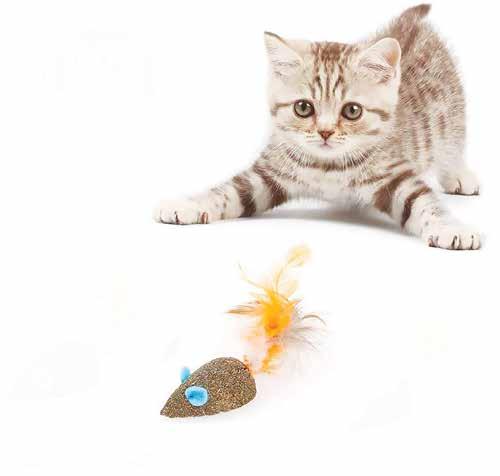
9 minute read
GREENER GREEN GRASS
Greener Green Grass Why Organic Lawns Make Eco-Sense
by Julie Peterson
With its dependence on synthetic fertilizers and pesticides, America’s 63,000 square miles of lawns rely on fossil fuels, put pressure on water supplies and devastate soil, watersheds, animals and people.
Fortunately, green turf can be attained organically, with important benefits. “In addition to protecting public health, eliminating our use of pesticides and fertilizers will allow us to build healthy soil and sequester more carbon as we face climate chaos,” says Mackenzie Feldman, executive director of Herbicide-Free Campus, a San Francisco organization working to transition colleges nationwide to organic lawns.
The Harm Done
Homeowner desire for lush swaths of monoculture grass has been fueled by lawn chemical ads equating model families with flawless lawns. Unfortunately, the “green grass of home” isn’t an ideal dream, it’s a nightmare. Research shows that it exposes people to cancer-causing, reproductive-harming and endocrine-disrupting chemicals, many of which are deemed safe by government agencies. The Pesticide-Induced Diseases database at BeyondPesticides.org holds myriad studies linking chemicals to asthma, diabetes, autism, lupus, arthritis, Parkinson’s disease, Alzheimer’s disease and cancer. Children are particularly vulnerable to the effects of toxins due to their developing organs.
Exposure to lawn chemicals also comes through the air, on indoor surfaces and in water. A U.S. Geological Survey report found pesticides in 99 percent of urban streams. In mixed land use areas, 100 percent of major rivers and 33 percent of major aquifers were tainted.
While the culture around the aesthetics of landscapes is strong, the tipping point has arrived.
“People are becoming more aware that their children are at elevated risk and that there are deficiencies in the laws that govern toxic chemical use,” says Jay Feldman, executive director of Beyond Pesticides, in Washington, D.C.
Lawn chemicals are also feeding climate change. “Not only are they fossil-fuel intensive to produce, they harm

the biology in the soil and destroy its ability to sequester carbon,” says Diana Carpinone, president of Non Toxic Communities, a pesticide reform nonprofit, and founder of Non Toxic Dover, in New Hampshire.
Front Yard Activists
Recent lawsuits and climate change have given activists more power to effect sweeping changes in policy. “This isn’t just a niche idea. We have a mandate, given looming environmental crises, to transform our current chemical intensive systems to organic,” says Jay Feldman.
Organic turf experts have devised methods to grow monoculture grass. According to Ryan Anderson, a community outreach specialist at the Integrated Pest Management Institute of North America and leader of Midwest Grows Green, “Homeowners can keep their lawns organic by increasing cultural controls.” These include aerating, over seeding and mowing high to build the soil, turf and plant system.
While pristine lawns are possible, reconsidering aesthetics is another option. “We could let native plants grow and embrace plant diversity as fundamental to ecosystem resilience,” says Mackenzie Feldman.
Indeed, “weeds” are beneficial. Clover feeds nitrogen to grass, benefits soil organisms and stays green long after turf. Dandelions were once considered a source of food and medicine, and all parts of it are edible, including flowers, roots and leaves.
Instead of living with weeds, some homeowners are choosing to tear out lawns and put in indigenous plants to attract pollinators and other wildlife. But it takes time for society to adopt new views and front yards can be polarizing.
“You can’t go from zero to hippie in a day. People need realistic goals,” says Carpinone.
Whether someone rents, owns or only has access to shared green spaces, Shaina Rico, founder of The Generation Ground, an Austin-based organization helping farmers launch regenerative businesses, feels everyone must “take ownership of our green spaces. If you are not the one managing the land, ask questions of those that are. What are we doing to support the soil biology? Can we achieve the goal without using chemicals? How can we increase soil organic matter?”
Greener Communities
Concerned citizens are asking local governments and school districts to eliminate chemical turf management protocols at parks and schools. Nonprofit campaigns such as Beyond Pesticides, Non Toxic Communities and Herbicide-Free Campus can sometimes send a spokesperson and provide ample data to overcome common objections. “We can show that organic is viable and economical. Organic systems end up reducing costs over time,” says Jay Feldman, who helps install community
Homeowners can help keep their lawns organic by aerating, over seeding and mowing high to build the soil, turf and plant system.
pilot sites.
Transitioning to organic practices requires a focus on soil health, building up microbial life and organic matter, understanding the ecosystem and creating a balanced ecology. Once in place, it’s a functioning system that doesn’t need much management.
“You can have a beautiful, organic, green lawn that’s safe for all living things,” says Carpinone.
Julie Peterson writes about wellness and environmental issues from rural Wisconsin. Reach her at JuliePeterson2222@gmail.com.

Earth-Friendly Pets Our Animals Can Go Green, Too

by Julie Peterson
Although cats and dogs don’t require much more than food, a cozy napping spot and human attention, U.S. pet owners spent $95.7 billion last year on their furry companions, according to the 2019 National Pet Owners Survey Statistics produced by the American Pet Products Association. That’s a lot of products, all of which require packaging, shipping, shopping, consumption and waste that the environment must bear. Finding eco-friendly alternatives is key to having a pet that doesn’t inadvertently harm the planet.
Proper Playthings
Pet toys can be costly to the wallet and the environment. Dogs can destroy flimsy items in seconds and the growing number of cat toys under the couch is money out the window. When choosing a toy, consider the pet’s play style. Look for non-toxic natural fiber, recycled, upcycled and locally sourced products. Reject plastic and other toxic materials that degrade and leach harmful substances into the pet. Purchase toys that have minimal packaging and remember that it won’t be any fun to play with if it is constantly stuck under the furniture or falls to pieces during the first roughhouse session.
Soft toys can be salvaged. Tie them in knots, sew them together or braid them into tug toys. Make soft or tug toys by upcycling old towels or T-shirts. Stuff some catnip in an old sock and let the playing begin. Cats can have as much fun with a paper bag as with an expensive toy. Consider simplicity.
Homeopathic Remedies
Many chemicals and pharmaceuticals can be replaced with simple, natural products.
Whether you grew up in a musical family, encouraged to practice endless hours before recitals, or whether you claim the littlest musicality of anyone you know, there are unquestionable benefits to playing musical instruments, especially piano. Furthermore, studies show it is truly never too late to start learning piano – the mental and physical benefits apply to all ages...
Make Use of the Magical Gift of Music
ALL AGES WELCOME!

ONLINE LESSONS AVAILABLE! BENEFITS INCLUDE: n Promote Mental Health & Development n Prevent Hearing & Memory Loss n Help in School Studies n Raise Self Esteem n Problem Solving n Improve Focus n Improve Coordination of Body Parts n Increase Discipline & Creativity
My students are like a second family to me. I have a very personalized approach to teaching. I am fully invested in my students’ results. My Russian educational background influences a disciplined teaching style but I throw in a laid-back, personalized approach to the mix so that a student is making progress but there is limited stress in the learning process. Serving the greater Ann Arbor area. Call, text or email Tatyana today at 810-599-1580 or Tatyana102161@gmail.com.
Essential-oil-based insect repellants are safer for pets and people. Apple cider vinegar contains nutrients, vitamins, minerals and enzymes that can be helpful for the treatment of allergies, urinary tract problems, hot spots, dandruff, ear discharge, eczema and stiff joints in dogs, according to Organic Pet Digest. Dr. Marc Smith, a veterinarian at Natchez Trace Veterinary Services, in Nashville, advises, “Apple cider vinegar is a good source of potassium and has excellent antibacterial and antifungal properties to boost the immune system.”
A veterinarian trained in traditional Chinese veterinary medicine can often provide natural treatments and preventatives using herbs, essential oils and other natural substances. Find such a practitioner at tcvm.com.
Green Grooming
Taking a bath in chemicals seems wrong for both humans and pets. Eco-friendly alternatives are available. “We use shampoos without chemicals, preservatives or phosphates,” says Kim Molnar, owner of Salon Fido LLC, in Cross Plains, Wisconsin. “It keeps the dog from inhaling or absorbing hazardous chemicals and keeps the same from washing down the drain.”
Natural Nourishment
A quality diet is good for the health of pets and the Earth. Many companies use local ingredients, sustainable manufacturing and recyclable packaging. Avoid artificial dyes, preservatives, fillers and chemicals.
According to the Association for Pet Obesity Prevention, an estimated 56 million cats and 50 million dogs in the U.S. were overweight or obese in 2018. Judicious feeding will trim a pet’s waistline and reduce the amount of packaging and bodily waste a pet produces.
“You can reduce the number of products you need by sharing your food with pets. Saving whole-food leftovers reduces waste and helps move pets away from processed food,” says Molnar. “There’s so much common sense involved. Feed them food.” Dogs love cooked sweet potatoes, pumpkin, carrots, broccoli and eggs. Cats can have cooked eggs, rice, spinach, pumpkin, salmon and chicken. Be aware of which foods are unsafe for pets. Some examples include onions, chocolate, bones, avocado and grapes.

Pooper Scoopers
Poop happens. Clean it up right. Kitty’s litter can be nontoxic and kept fresh with regular scooping. Picking up after the pup keeps green spaces clean and limits excess nutrients going to waterways. “If your dog is harboring any type of intestinal parasites such as hookworms, roundworms or whipworms, then the eggs of those parasites can be present in poo and spread worms to other dogs and people,” says Sarah J. Wooten, DVM, CVJ, in Greeley, Colorado. Dogs and cats may seem to tread lightly on the Earth, but their carbon footprint can be heavy. Help them get green by evaluating what they consume and getting them in step with Mother Nature.
Julie Peterson writes about wellness and environmental issues.
Reach out at JuliePeter son2222@gmail.com.
Is Your Pet Suffering from Chronic... Is Your Pet Suffering from Chronic...
• Allergy & Skin Disease • Behavior Problems • Vomiting and/or Diarrhea • Advancing Age Problems • Arthritis • Urinary Tract Infections
Functional medicine may be the key to restoring your pet’s health. It combines science with alternative medicine to uncover the root causes of chronic disease.
John B. Smith, D.V.M.
Office Hours by appointment www.dogdoctor.us
(734) 213-7447
Petcare Holistic Veterinary Center 1954 S. Industrial, Ann Arbor, MI 48104







